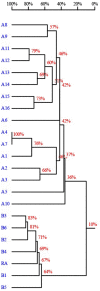Type B Chloramphenicol Acetyltransferases Are Responsible for Chloramphenicol Resistance in Riemerella anatipestifer, China
- PMID: 28298905
- PMCID: PMC5331189
- DOI: 10.3389/fmicb.2017.00297
Type B Chloramphenicol Acetyltransferases Are Responsible for Chloramphenicol Resistance in Riemerella anatipestifer, China
Abstract
Riemerella anatipestifer causes serositis and septicaemia in domestic ducks, geese, and turkeys. Traditionally, the antibiotics were used to treat this disease. Currently, our understanding of R. anatipestifer susceptibility to chloramphenicol and the underlying resistance mechanism is limited. In this study, the cat gene was identified in 69/192 (36%) R. anatipestifer isolated from different regions in China, including R. anatipestifer CH-2 that has been sequenced in previous study. Sequence analysis suggested that there are two copies of cat gene in this strain. Only both two copies of the cat mutant strain showed a significant decrease in resistance to chloramphenicol, exhibiting 4 μg/ml in the minimum inhibitory concentration for this antibiotic, but not for the single cat gene deletion strains. Functional analysis of the cat gene via expression in Escherichia coli BL21 (DE3) cells and in vitro site-directed mutagenesis indicated that His79 is the main catalytic residue of CAT in R. anatipestifer. These results suggested that chloramphenicol resistance of R. anatipestifer CH-2 is mediated by the cat genes. Finally, homology analysis of types A and B CATs indicate that R. anatipestifer comprises type B3 CATs.
Keywords: Riemerella anatipestifer; antibiotics resistance; chloramphenicol acetyltransferase; homologous recombination; site-directed mutagenesis.
Figures




References
LinkOut - more resources
Full Text Sources
Other Literature Sources
Miscellaneous

